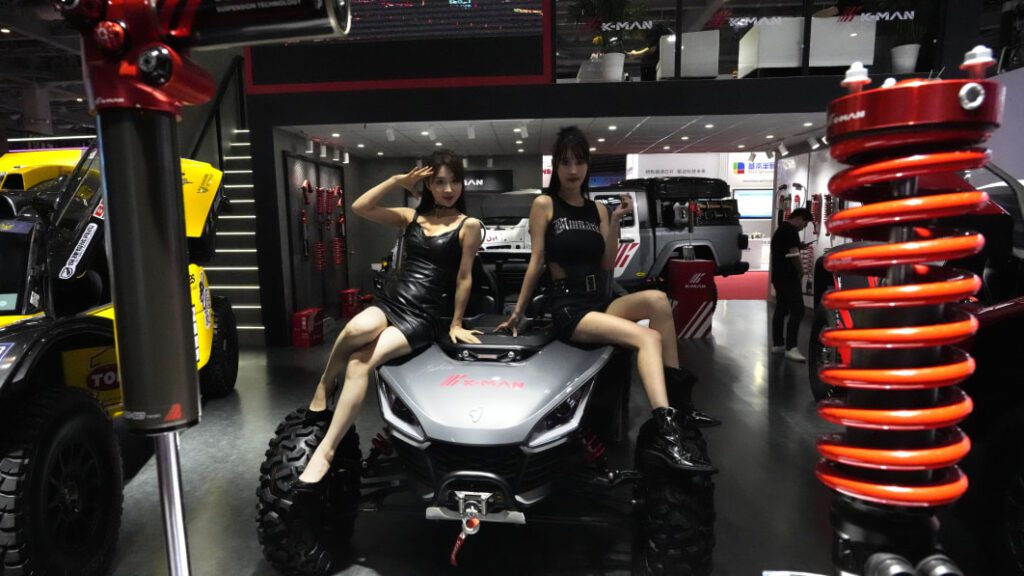At Shanghai show, auto rivals lure drivers with in-car karaoke, crystal balls

SHANGHAI – Automakers keen to make a splash at the Shanghai auto show showed off vehicles boasting features from crystal balls to in-car karaoke systems and 3D dashboards, as competition to attract drivers heats up in the world’s largest auto market.
At the first such showcase in China since the country’s COVID-19 curbs ended, Zeekr, a premium electric vehicle (EV) brand owned by Zhejiang Geely Holding Group, highlighted how its newly released X model SUV has seats that can massage passengers.
Many other Chinese brands showed off dashboard touch screens that allow users to sing karaoke or play games on the go, popular pursuits for consumers in a market where nimble domestic automakers have stolen a march on traditional Western brands that once dominated.
Polestar, a premium EV maker founded by Volvo and Geely, presented its Polestar 4 SUV coupe, set to go into production at the end of this year, which does away altogether with a rear window, instead relying on HD cameras mounted to its roof to show drivers what’s behind them.
The feature maximizes visibility and space for passengers in the back seat of the vehicle, Polestar said.
Popular video game engine company Unity showed how it is helping companies like Li Auto transform their dashboard display into a 3D game-like interface, as well as displaying its version of the cockpit of the future at the auto show.
Chinese automakers have been grabbing market share from foreign rivals in recent years in part by courting drivers with tailored lifestyle services and by releasing new models more quickly. They have also been extremely aggressive in coming up with innovations.
And while European carmakers commonly charge additional fees for features such as side view mirrors that retract when cars are parked, Chinese automakers tend to throw these features in for free, adding value to their already lower price points.
“So many new vehicles, so many new Chinese vehicles looking very good,” said Patrick Koller, chief executive of French auto parts supplier Faurecia. Koller also noted the interior of many new Chinese models had completely done away with buttons in favour of voice and movement activation.
“The electronics in China is more of a consumer-driven electronics, this means you are looking for a ‘Wow!’ effect,” he said.
Foreign automakers also put their best foot forward.
South Korean giant Hyundai’s high-end Genesis brand, a relative newcomer to the Chinese market, turned heads by putting a crystal ball in the centre console of its EV GV60 model, according to Markus Henne, the brand’s CEO in China.
The “sphere”, as Genesis calls it, lights up when the car starts is turned on, giving drivers a visual cue in lieu of the traditional engine noise absent in an EV, and can also be used to change gears.
“It’s really been eaten up by Chinese consumers,” Henne said.
But while speed at which automakers were introducing new features and models was exciting, Faurecia’s Koller struck a cautionary note, citing the costs involved.
“To be honest I’m a little bit concerned about this speed and the renewing of vehicles on a very short cycle. This costs a fortune and it doesn’t give you the time to really mature innovations and technology,” Koller said.
(Reporting by Casey Hall, Zhang Yan, Xihao Jiang in Shanghai and Josh Ye in Hong Kong; Editing by Brenda Goh and Kenneth Maxwell)




